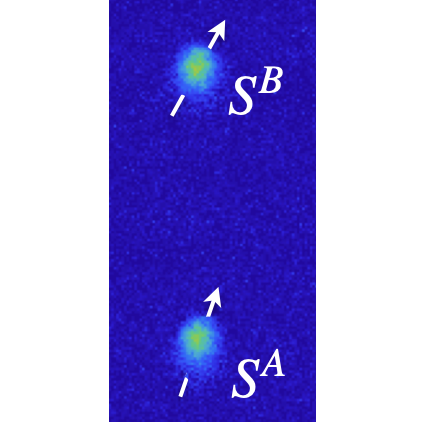Einstein-Podolsky-Rosen Experiment with two Bose-Einstein condensates

We observed the Einstein-Podolsky-Rosen paradox with two spatially separated, massive many-particle systems. Our results show that the conflict between quantum mechanics and local realism does not disappear as the system size increases to more than a thousand massive particles.
In 1935, Einstein, Podolsky, and Rosen (EPR) conceived a gedanken experiment which became a cornerstone of quantum technology and still challenges our understanding of reality and locality today. While the experiment has been realized with small quantum systems, a demonstration of the EPR paradox with massive many-particle systems remains an important challenge, as such systems are particularly closely tied to the concept of local realism in our everyday experience and may serve as probes for new physics at the quantum-to-classical transition.
We have realized the EPR experiment with two spatially separated Bose-Einstein condensates, each containing about 700 rubidium atoms. Entanglement between the condensates results in strong correlations of their collective spins, allowing us to demonstrate the EPR paradox between them. Our results represent the first observation of the EPR paradox with spatially separated, massive many-particle systems. They show that the conflict between quantum mechanics and local realism does not disappear as the system size increases to more than a thousand massive particles. Furthermore, EPR entanglement in conjunction with individual manipulation of the two condensates on the quantum level, as we demonstrate here, constitutes an important resource for quantum metrology and information processing with many-particle systems.
Check out our paper in Phys. Rev. X and the accompanying Physics Viewpoint by Margaret Reid!
